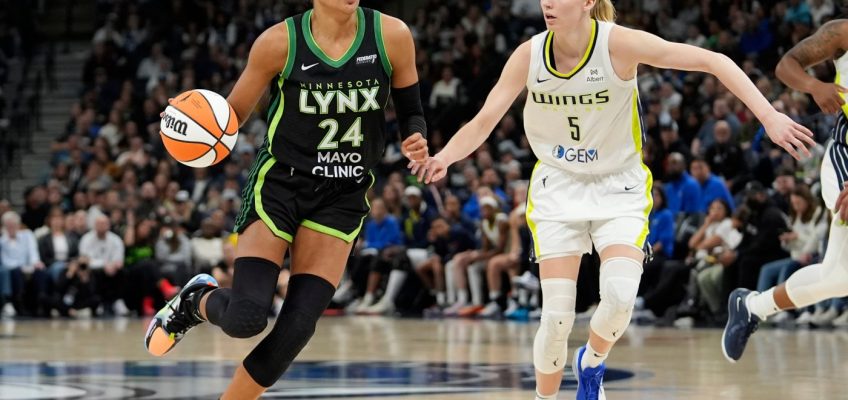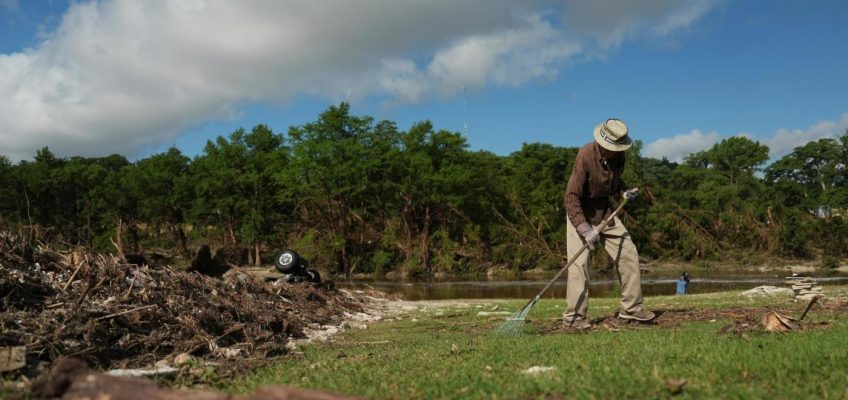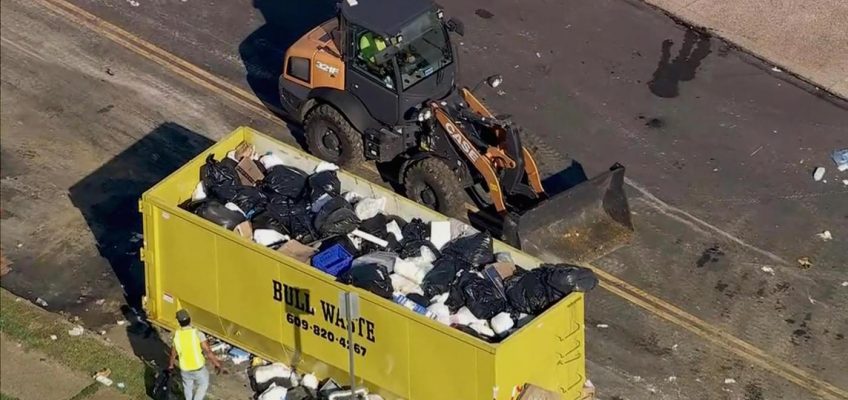Alanna Smith blocked Rachel Banham’s potential game-tying 3-point attempt with nine ticks to play in Minnesota’s game against Chicago on Sunday.
Minnesota Lynx forward Napheesa Collier celebrates her three-point basket against the Phoenix Mercury in the fourth quarter of Game 2 of a WNBA basketball first-round playoff game Wednesday, Sept. 25, 2024, in Minneapolis. (Bruce Kluckhohn / Associated Press)
Napheesa Collier grabbed the loose ball and was immediately fouled by Banham.
Ballgame.
Sure, Collier still had to hit at least one free throw with eight seconds to play to extend the Lynx’s lead to two possessions. But at this point, that was all but a formality.
Of course, she hit both to secure Minnesota’s 80-75 victory.
That’s what Collier does, on top of literally everything else.
Those made free throws were Collier’s 44th and 45th in a row, setting a new franchise record. The previous mark was 44, set by Candice Wiggins 15 years ago.
“Don’t jinx it,” Lynx wing Diamond Miller told the media when the subject was broached after the Chicago game.
As if something like that could stop Collier.
The player who’s sound in everything she does has now seemingly mastered one of the games most basic fundamentals that is so frequently the difference between winning and losing.
After hovering around the 80% mark – a strong number in its own right – Collier is hitting 95.4% of her attempts this season.
“That’s what Phee been doing all season long for us,” Lynx guard Courtney Williams said. “We’re confident when she be stepping up to the line.”
Collier and Kayla McBride alike. McBride was on her own personal streak, hitting 36 straight free-throws prior to missing two on Sunday.
Minnesota is armed with two of the lethalist free-throw shooters in the WNBA. Entering Tuesday’s action, 32 players had shot 50-plus times from the stripe this season. Collier is first among them in free-throw percentage, while McBride is second (94.1).
“Yeah, it’s like first to raise their hand to get the tech foul (shots) and all that,” Collier joked.
Lynx coach Cheryl Reeve noted she has no role in those discussions. Whichever of their two sharpshooters have the ball at the stripe late in tight games, Minnesota knows it’s in a good position to close out yet another victory.
“They’re our closers,” Williams said. “Either one of them step up to that line, we’re all confident they’re going to step their game up.”
Related Articles
New all-star Courtney Williams leads Lynx to 11th straight home victory
Napheesa Collier scores 22 to lead Lynx over Valkyries 82-71
Lynx vs. Golden State: Stats, injuries, how to watch
Collier scores 28, Lynx bounce back with win against Washington
Lynx log third-largest win in team history to begin busy stretch of games




